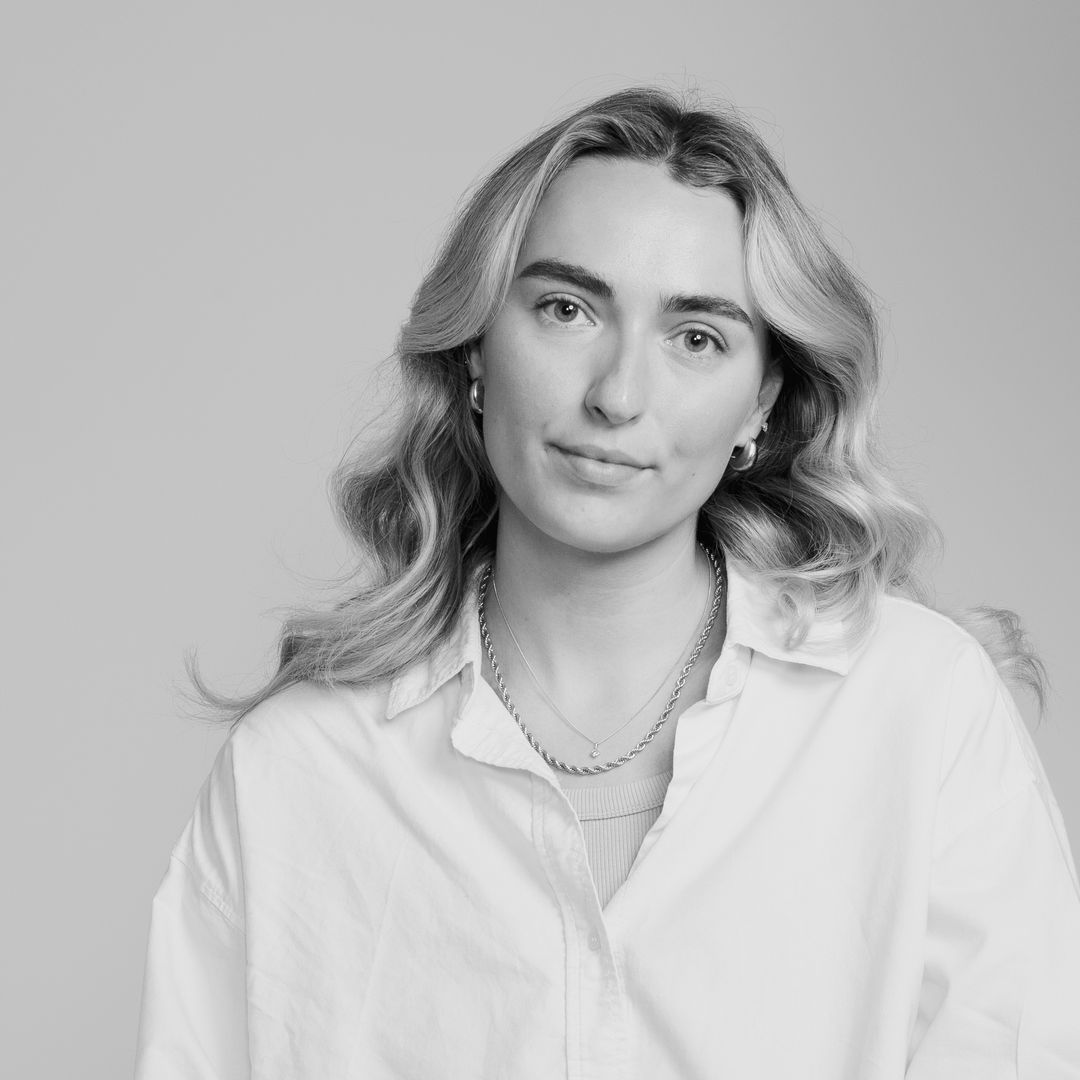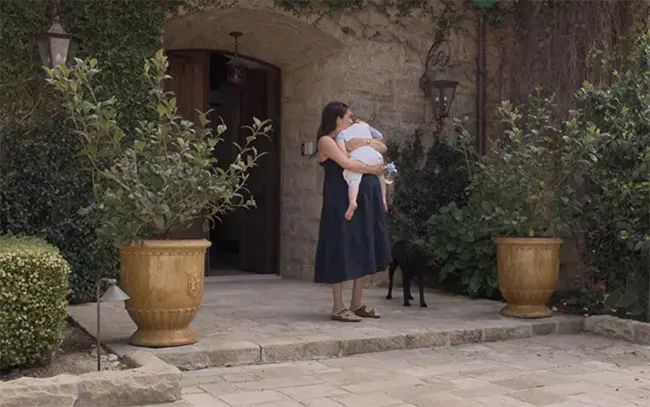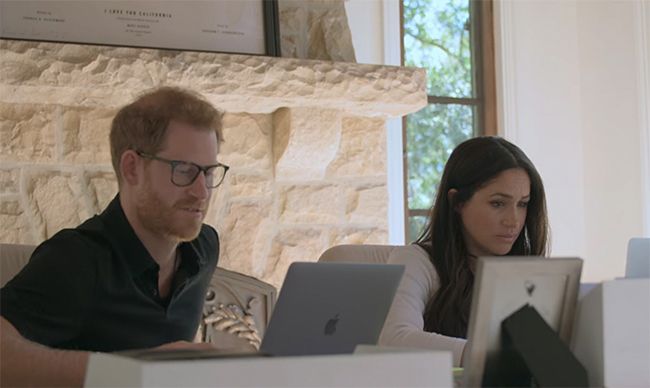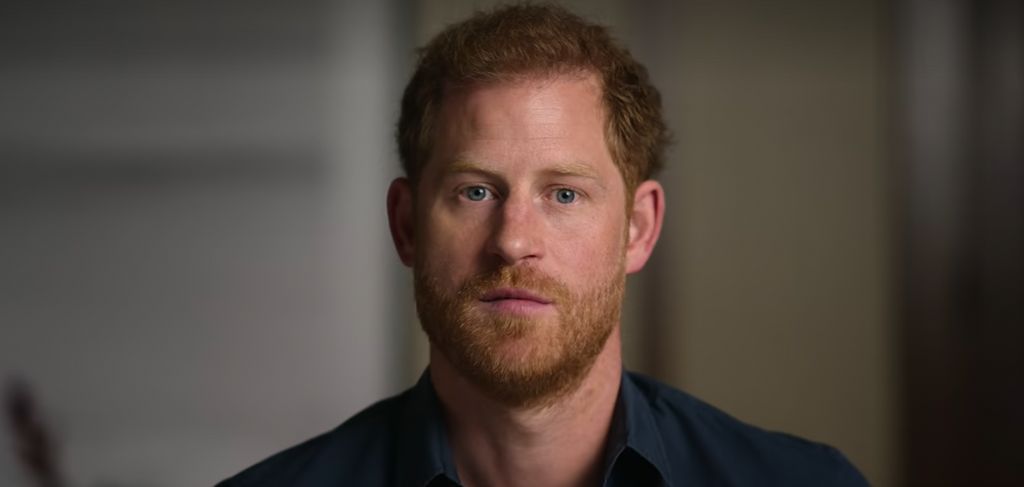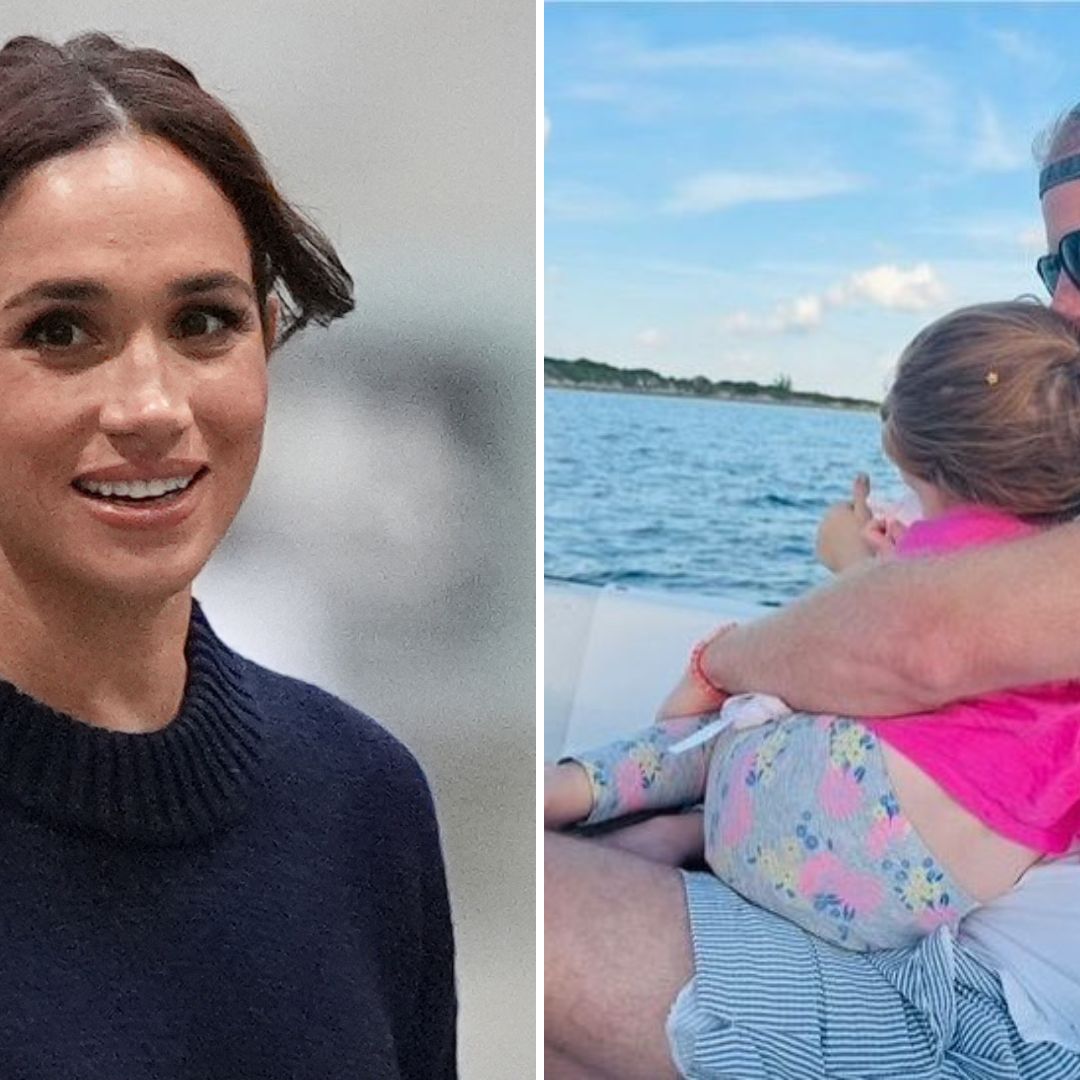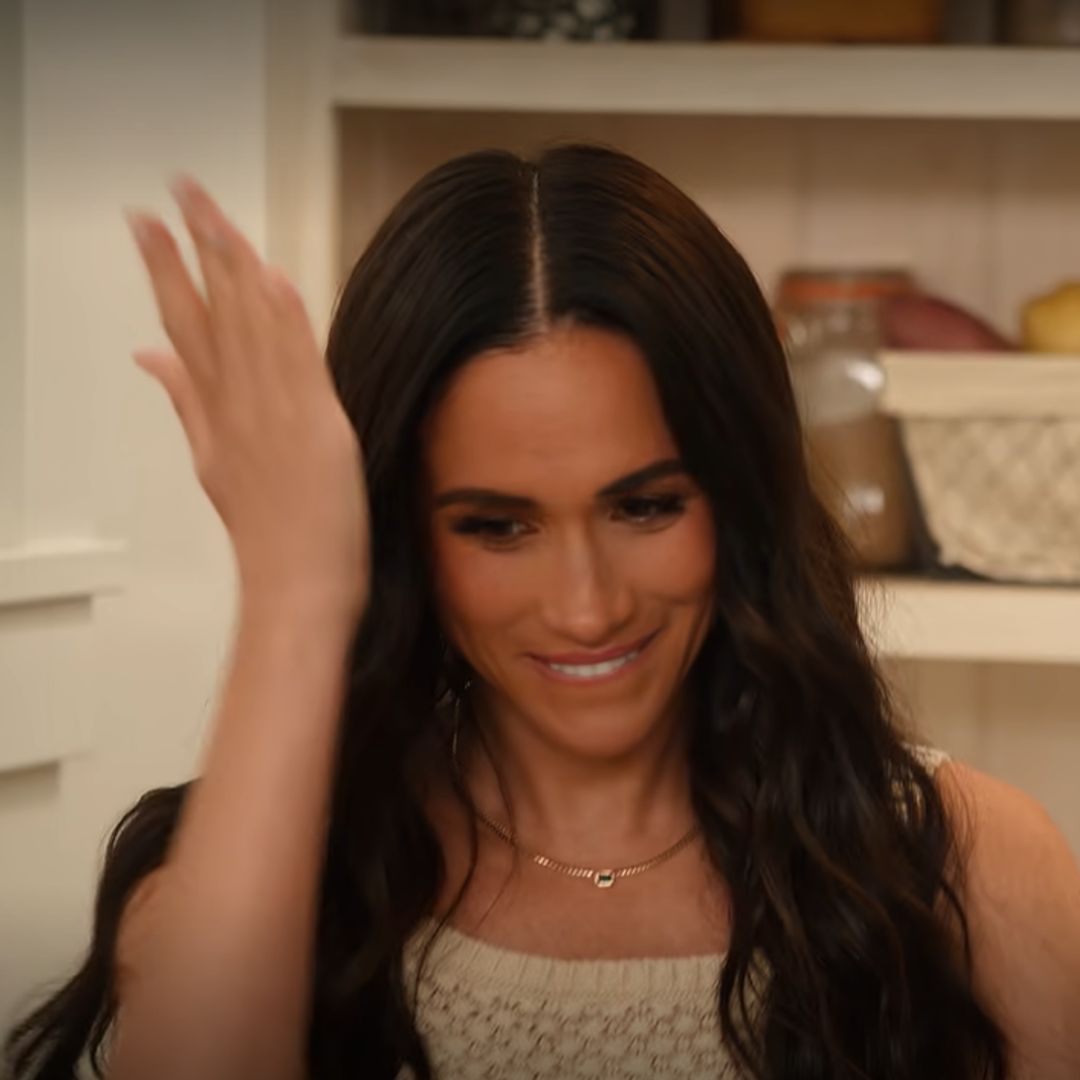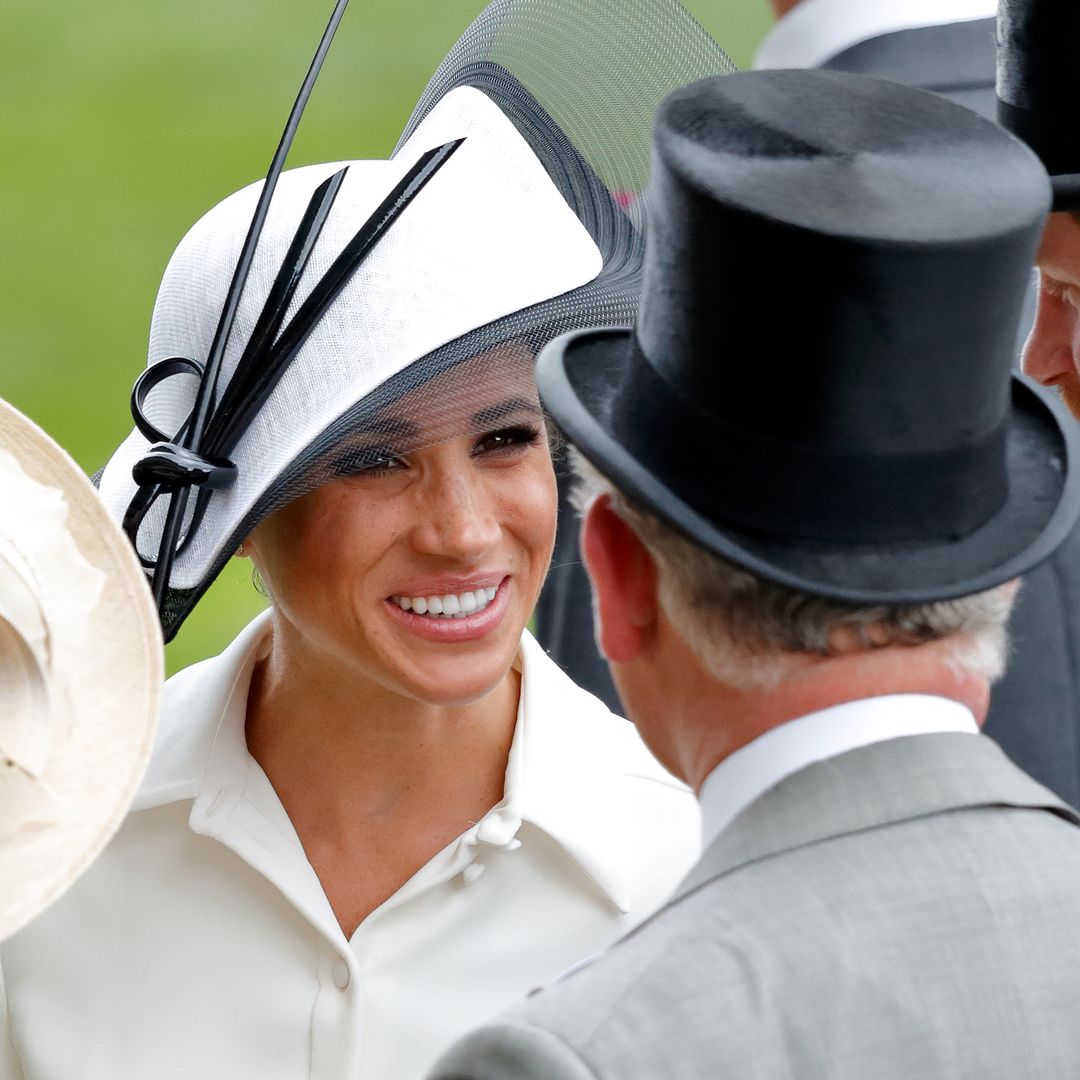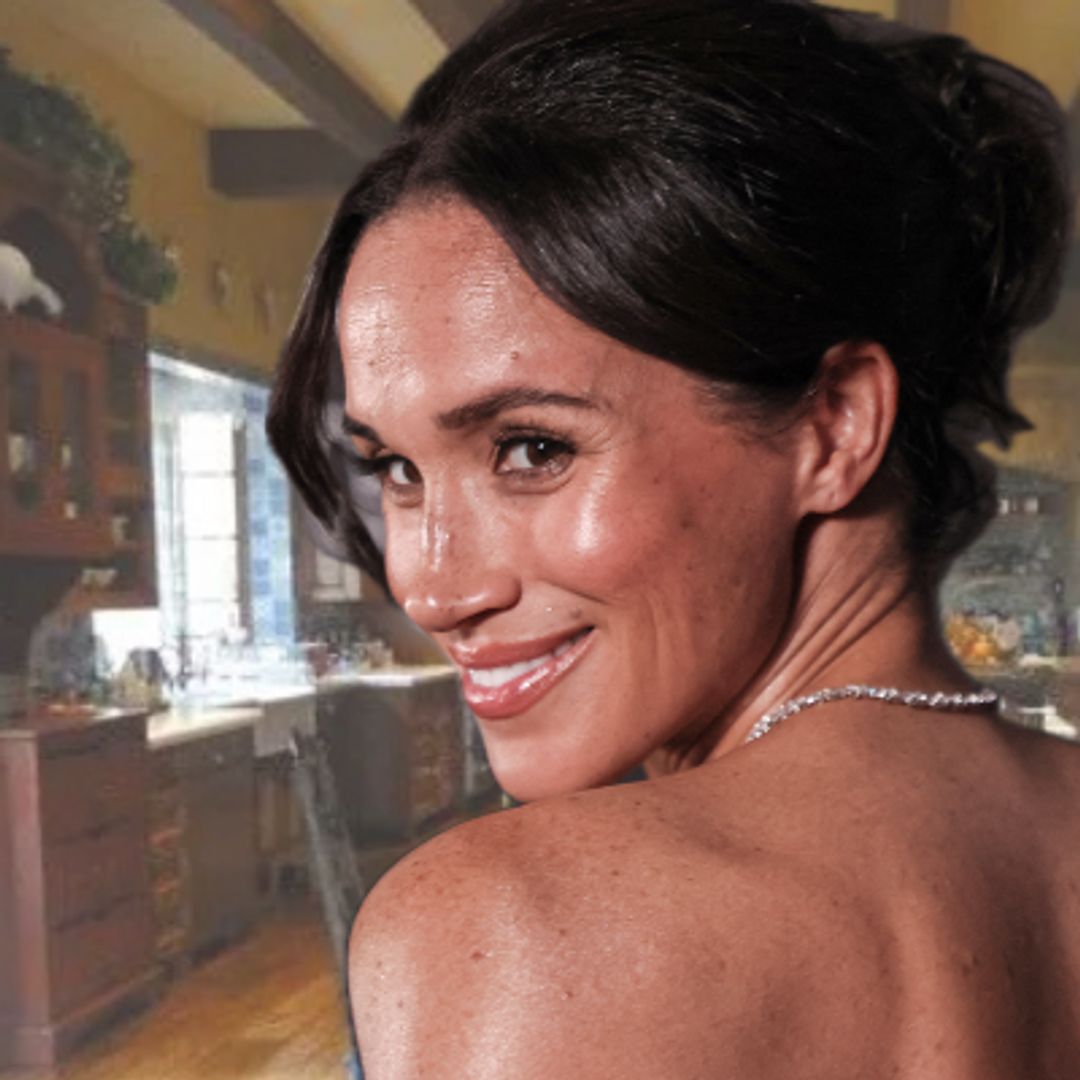Prince Harry has given viewers an incredibly rare glimpse inside his home office at the £11 million mansion he shares with wife Meghan and their two children, Prince Archie and Princess Lilibet, in his latest Netflix documentary Heart of Invictus.
In episode two of the docuseries, which takes a closer look at the Invictus Games founded by the Duke of Sussex, the royal takes a Zoom call from his family home. In the clip below, Harry and Meghan's ultra sleek interiors can be seen in the background of the call…
Exposed wooden beams and modern light fixtures add a contemporary feel to the grand property, while large floor-to-ceiling windows flood the space with natural sunlight. The Sussexs' tropical garden can be seen out the window, which was also shared in the couple's Harry & Meghan docuseries.
The couple's stone property is covered in sprawling ivy, giving it a postcard-perfect exterior and there are double wooden doors that lead into their home.
As Prince Harry worked from a glass table, a silver desk lamp could be seen to the right of his laptop set up. House plants and fresh flowers could also be seen in the foreground of the royal's workspace.
It seems Harry and Meghan may have multiple work-from-home setups in their 16-bedroom home, as the couple previously filmed from a different space.
The couple's alternative joint home office was shown during the filming of Harry & Meghan, and in a hilarious moment the Duke was seen gasping as his wife exclaimed: "Beyonce just texted!"
The duo work on a huge wooden table and have their own laptops.
As well as opening the doors to his private office, the Duke of Sussex also spoke candidly about his turbulent mental health journey across the five-part Netflix series.
The father-of-two discussed the impact of losing his mother, Princess Diana, at a young age and the effect touring Afghanistan had on him when he admitted that he didn't have the "support network" around to help.
Addressing the camera directly, he said: "The biggest struggle for me was the people," he began, adding: "No one around me could really help. I didn't have that support structure, that network or that expert advice to identify what was really going on with me."

